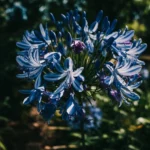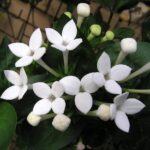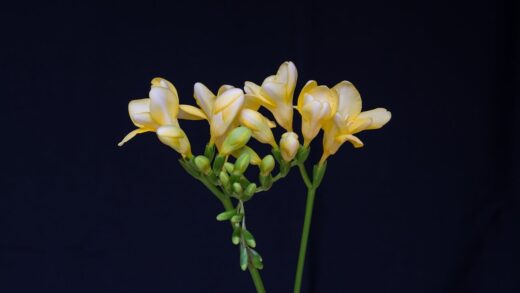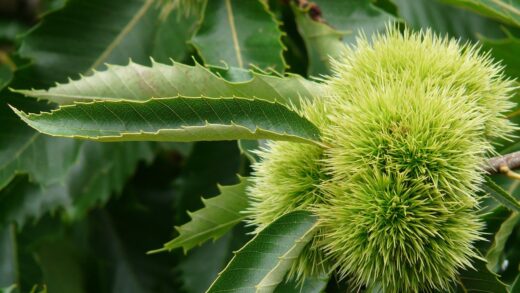Pruning is a vital horticultural practice that plays a multifaceted role in the life of a sleeping hibiscus. It is far more than just a simple haircut; it is a strategic intervention that shapes the plant’s growth, enhances its health, and stimulates the production of its enchanting, teardrop-shaped flowers. An unpruned sleeping hibiscus can become a tangled, leggy mass of stems, with diminished flowering and a less than desirable appearance. Through the thoughtful and timely use of pruning shears, a gardener can transform this plant into a dense, well-structured shrub that is both aesthetically pleasing and prolifically blooming, fully realizing its ornamental potential.
The primary reason for pruning this particular plant is to encourage a bushy, compact form. Malvaviscus arboreus has a natural tendency to send out long, sometimes unruly, branches. Pruning these stems back stimulates the plant to break new growth from dormant buds located further down the branch, resulting in multiple new shoots where there was previously only one. This process, repeated over time, is what creates a dense and full specimen. It is a fundamental technique for managing the plant’s size and shape, which is especially important for container-grown plants or those in smaller garden spaces.
Another critical benefit of pruning is the promotion of flowering. The sleeping hibiscus produces its flowers on new growth, that is, on the stems that have grown in the current season. Therefore, by cutting back old branches, you are directly encouraging the development of the new wood that will bear the season’s flowers. A good pruning in the spring can lead to a spectacular increase in the number of blooms. Regular trimming throughout the growing season can also help to ensure a continuous display of flowers, rather than a single, concentrated flush.
Beyond aesthetics and flower production, pruning also contributes to the overall health of the plant. The process involves the removal of any dead, damaged, or diseased wood. This not only improves the plant’s appearance but also eliminates potential entry points for pathogens and pests. Furthermore, thinning out a dense canopy improves air circulation through the center of the plant. This increased airflow helps the foliage to dry more quickly after rain or watering, significantly reducing the risk of fungal diseases like powdery mildew, which thrive in stagnant, humid conditions.
The best time for pruning
The timing of your pruning activities is crucial to achieving the desired results without causing undue stress to the plant. The most significant structural pruning should be carried out in the early spring. This is the ideal moment, as the plant is just beginning to emerge from its winter dormancy and is about to enter its most vigorous phase of growth. Pruning at this time allows the plant to quickly heal its wounds and channel its stored energy directly into producing a strong flush of new, healthy shoots that will form the framework for the coming season.
More articles on this topic
A hard pruning can be performed in the spring if the plant has become particularly overgrown, leggy, or if you wish to rejuvenate an older specimen. This can involve cutting back the main stems by as much as one-half to two-thirds of their length. While this may seem drastic, a healthy sleeping hibiscus will respond with vigorous new growth from the base and remaining stems. This type of renewal pruning is an excellent way to restore a compact, bushy shape to a plant that has lost its form over time.
Throughout the growing season, from late spring to late summer, you can perform lighter, maintenance pruning. This is often referred to as “pinching” or “tipping back.” It involves simply snipping off the tips of the growing stems. This removes the terminal bud, which produces hormones that suppress the growth of side shoots. By removing this tip, you encourage the buds further down the stem to break, leading to more branching and a fuller plant. This can be done every few weeks on any stems that appear to be getting too long, and it will also help to stimulate more flower buds.
It is generally advisable to avoid any heavy pruning in the late autumn or winter. Pruning is a signal to the plant to produce new growth. Any tender new shoots that are stimulated late in the season will not have time to harden off before the arrival of cold weather and will be highly susceptible to frost damage. If you need to bring the plant indoors for the winter, you can do some light trimming to reduce its size for manageability, but save any major structural pruning for the following spring.
Essential pruning techniques
When making any pruning cut, the quality of the tool and the cut itself is paramount. Always use pruning shears, loppers, or scissors that are both sharp and clean. A sharp blade makes a clean cut that the plant can heal quickly, while a dull blade can crush the stem tissue, leaving a ragged wound that is more susceptible to disease. It is also good practice to disinfect your tools with rubbing alcohol or a bleach solution, especially before you start and when moving between different plants, to prevent the spread of pathogens.
More articles on this topic
The placement of the cut is also important for directing new growth. Whenever you are cutting back a stem, make your cut about 5-6 millimeters above a leaf node. A leaf node is the point on the stem where a leaf is or was attached. This is where dormant buds are located, and the new growth will emerge from this point. Making the cut just above an outward-facing node can help to direct the new branch to grow outwards, contributing to a more open and less congested plant structure.
The process of thinning is a crucial technique for improving the health and structure of the sleeping hibiscus. This involves selectively removing entire branches right back to their point of origin on a main stem or at the base of the plant. Thinning is used to open up the canopy to improve light penetration and air circulation. It is also the method used to remove any crossing or rubbing branches, which can create wounds and potential entry points for disease, as well as any branches that are weak, spindly, or growing in an undesirable direction.
When removing dead or diseased wood, it is important to cut back into healthy tissue. If you are pruning out a diseased branch, make your cut at least a few inches below the visibly affected area to ensure you have removed all of the infected material. Look for wood that is green and healthy on the inside. After cutting out diseased wood, it is especially important to sterilize your pruning tool before making any other cuts on the plant to avoid spreading the infection.
Shaping and maintaining the plant
The goal of shaping is to create a plant with a pleasing form and a strong structure. For the sleeping hibiscus, this typically means aiming for a rounded, bushy shrub. This is achieved through the pruning techniques discussed earlier, particularly by cutting back stems to encourage branching. As you prune, step back frequently to look at the plant from all angles. This will help you to identify any unbalanced areas and to visualize how the plant will grow in response to your cuts, allowing you to create a more symmetrical and aesthetically pleasing shape.
Container-grown plants will require more regular pruning to keep them within their desired size limits. The restricted root volume of a pot cannot support an indefinitely expanding plant. Regular trimming and an annual spring pruning will keep the plant’s size in balance with its container, preventing it from becoming top-heavy and root-bound too quickly. This consistent maintenance is key to successfully growing a large shrub like the sleeping hibiscus in a container for many years.
The sleeping hibiscus can also be trained into a “standard” or tree-like form. This is a more advanced pruning project that requires patience and dedication. It involves selecting a single, strong, upright stem to serve as the “trunk” and removing all the lower branches and side shoots. The top portion of the plant is then allowed to branch out and is pruned into a rounded “head.” This creates a very formal and striking appearance, showcasing the plant’s pendulous flowers in a unique way.
Do not be afraid to prune your sleeping hibiscus. It is a vigorous and forgiving plant that responds very well to being cut back. Many novice gardeners are hesitant to prune, fearing they will harm the plant. However, with the sleeping hibiscus, a lack of pruning is more likely to lead to a decline in its appearance and performance. Regular, thoughtful pruning is one of the most beneficial things you can do to maintain a healthy, attractive, and floriferous plant over the long term.


















